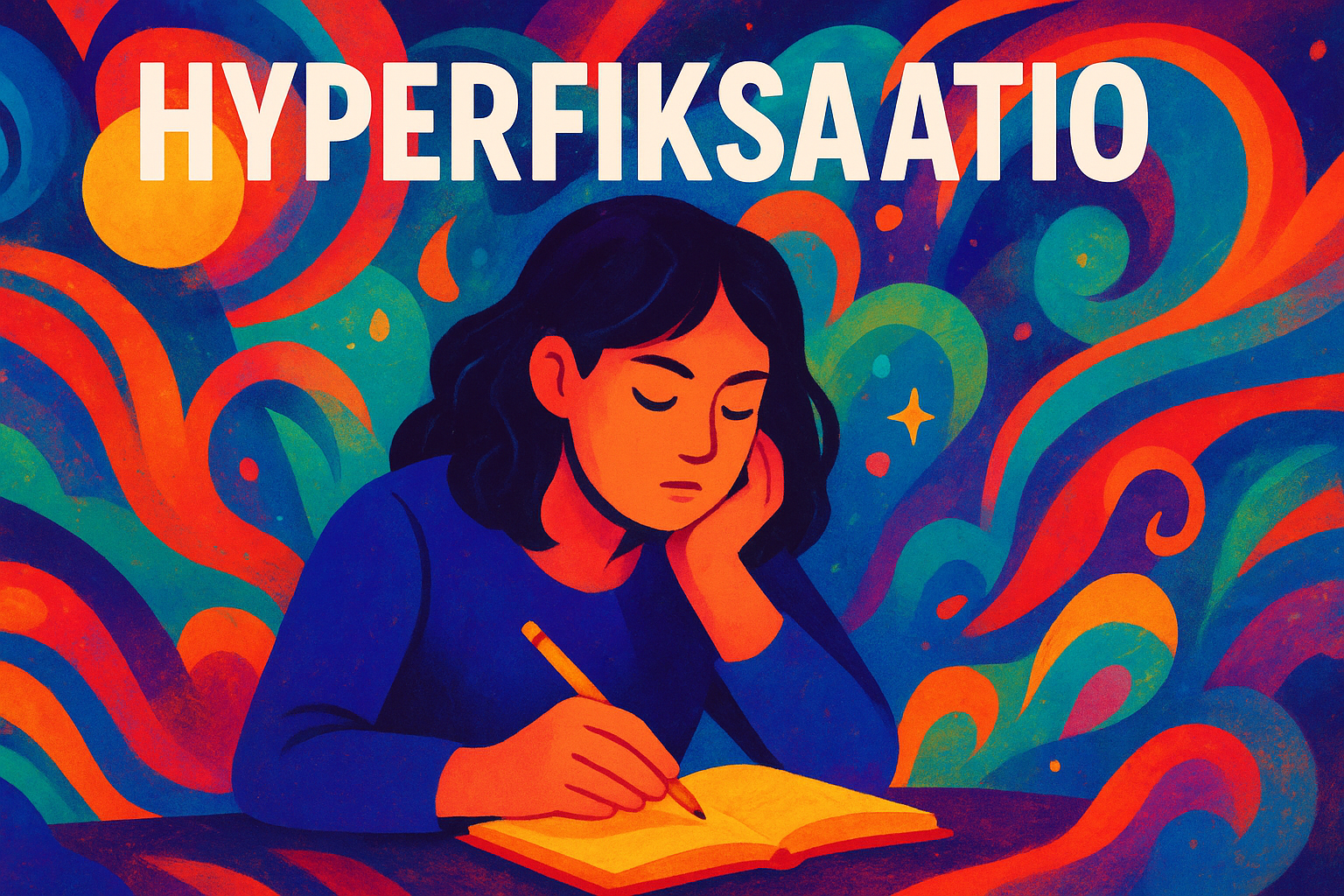Hyperfiksaatio is a fascinating psychological and behavioral phenomenon that describes a state of extreme concentration or obsession with a specific topic, activity, or object. It goes beyond ordinary interest and becomes a deeply consuming experience that can dominate a person’s thoughts, emotions, and daily life. While anyone can experience moments of deep focus, hyperfiksaatio is especially common among neurodivergent individuals, such as those with ADHD or autism spectrum conditions.
In recent years, conversations about hyperfiksaatio have gained traction, especially as awareness of neurodiversity has grown. Many people now view it not only as a challenge but also as a unique strength. In this article, we will explore what hyperfiksaatio is, why it occurs, its benefits, its drawbacks, and how individuals can manage it in healthy and productive ways.
What is Hyperfiksaatio?
At its core, hyperfiksaatio is the experience of being completely absorbed by one specific subject or activity. Unlike casual hobbies, hyperfiksaatio can feel overwhelming, almost as if the brain is locked onto a single channel and struggles to tune out.
For example, someone experiencing hyperfiksaatio might spend hours reading about a historical event, playing a specific video game, or researching every detail of a television series. They may replay songs endlessly, rewatch the same scenes from a movie, or collect in-depth knowledge about a niche subject.
The difference between hyperfiksaatio and regular focus lies in its intensity, persistence, and impact. It is not just about enjoying something; it is about feeling compelled to immerse in it repeatedly.
Causes of Hyperfiksaatio
The reasons behind hyperfiksaatio are complex and varied. Several factors can contribute to its development:
-
Neurological Factors
Research shows that the brain’s dopamine regulation influences attention and reward. For neurodivergent individuals, dopamine imbalances can make certain stimuli more rewarding than others, resulting in hyperfiksaatio. -
Emotional Attachment
Many people develop hyperfiksaatio around topics or activities that bring comfort, excitement, or emotional safety. For instance, a person may become deeply attached to a fictional world that provides an escape from stress. -
Coping Mechanism
Hyperfiksaatio often acts as a coping tool. When real life feels overwhelming, diving into a fixation can create a structured, safe, and predictable environment. -
Intellectual Stimulation
Some fixations arise because a subject provides endless intellectual curiosity. The brain craves stimulation, and the fixation delivers constant novelty or complexity to explore.
Signs and Characteristics of Hyperfiksaatio
Hyperfiksaatio does not look the same for everyone, but there are common traits:
-
Spending excessive time on a particular interest.
-
Difficulty shifting focus away from the fixation.
-
Repeatedly engaging with the same material or activity without boredom.
-
Talking extensively about the subject to others.
-
Neglecting other responsibilities, including meals, sleep, or work.
While these signs may sound negative, it is important to note that hyperfiksaatio also brings passion, creativity, and expertise.
Positive Effects of Hyperfiksaatio
Hyperfiksaatio is not always a problem. In fact, it can be one of the greatest strengths a person possesses.
-
Deep Knowledge and Expertise
People with hyperfiksaatio often become experts in their chosen subject. This depth of knowledge can lead to academic success, career opportunities, or personal fulfillment. -
Creative Breakthroughs
Artists, writers, and musicians frequently experience hyperfiksaatio, channeling it into their work. This deep focus allows them to produce innovative and emotionally powerful creations. -
Resilience and Dedication
When hyperfiksaatio aligns with goals, it fuels perseverance. A student may use it to excel in a subject, or an inventor may harness it to develop groundbreaking ideas. -
Joy and Passion
On a personal level, hyperfiksaatio brings joy, excitement, and satisfaction. Immersion in something deeply loved can be profoundly rewarding.
Challenges of Hyperfiksaatio
Despite its benefits, hyperfiksaatio also presents real challenges.
-
Neglecting Daily Needs
When absorbed in a fixation, people may forget to eat, sleep, or take care of essential responsibilities. -
Difficulty Shifting Focus
Transitioning from a fixation to another task can feel almost impossible. This may lead to struggles in school, work, or relationships. -
Social Strain
Friends and family may feel ignored if the person’s attention is always consumed by hyperfiksaatio. Excessive discussion about the fixation can also overwhelm others. -
Mental Exhaustion
What begins as energizing can eventually lead to burnout, especially if the fixation is intense for long periods without breaks.
Hyperfiksaatio in Daily Life
The impact of hyperfiksaatio differs across life stages and contexts.
-
Children often display hyperfiksaatio through repeating games, watching the same cartoons, or collecting detailed knowledge about dinosaurs, space, or other subjects.
-
Students may find themselves excelling in one subject while struggling to balance broader academic responsibilities.
-
Adults often turn fixations into careers, side projects, or hobbies. For some, it becomes a source of income or recognition.
-
Creative Professionals rely on hyperfiksaatio as bursts of inspiration that push their art, music, or writing to new heights.
Recognizing these patterns helps in using hyperfiksaatio constructively.
Strategies for Managing Hyperfiksaatio
Because hyperfiksaatio can be both a gift and a challenge, learning to manage it is crucial. Here are strategies that can help:
-
Set Boundaries with Time
Use timers, alarms, or scheduled breaks to ensure daily needs and responsibilities are met. -
Integrate Fixations into Goals
Channel hyperfiksaatio into education, career, or creative projects. If a fixation is productive, it can lead to achievements and personal growth. -
Practice Self-Care
Ensure that sleep, nutrition, and exercise are not sacrificed for the fixation. -
Communicate with Others
Being open about hyperfiksaatio helps friends, family, and colleagues understand and support rather than misunderstand. -
Balance with Variety
While it may be difficult, introducing small amounts of variety into routines prevents burnout and keeps life balanced.
Hyperfiksaatio and Neurodiversity
One of the most important conversations about hyperfiksaatio is its connection to neurodiversity. For people with ADHD or autism, hyperfiksaatio is often a defining characteristic. Rather than being seen purely as a symptom, it is increasingly recognized as a strength when harnessed effectively.
Neurodivergent individuals often bring unique perspectives, creativity, and problem-solving skills to workplaces, communities, and families. By understanding hyperfiksaatio, society can move toward greater acceptance and appreciation of neurodiverse minds.
Read also: Manh Tan Sac Stardew: Exploring the Hidden Meaning and Its Connection to Stardew Valley
Conclusion
Hyperfiksaatio is a powerful phenomenon that highlights the extraordinary capacity of the human mind for focus, passion, and dedication. While it can present real challenges—such as neglect of responsibilities, social strain, and difficulty shifting attention—it also provides unparalleled opportunities for creativity, expertise, and joy.
By learning to manage hyperfiksaatio, individuals can transform it into a force for personal growth and contribution to society. Rather than being feared or stigmatized, hyperfiksaatio deserves recognition as a vital aspect of how many people experience and engage with the world.


